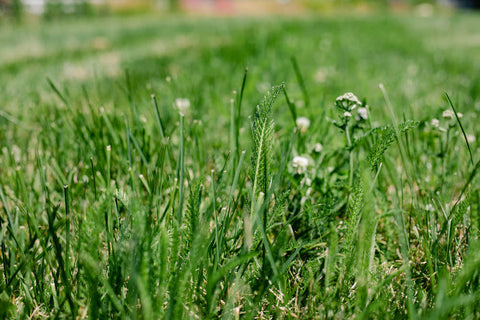For many people, a lawn is the first thing that comes to mind when they picture the perfect garden. Idyllic expanses of lush green turf seem to have always been shown as the ultimate status symbol to show off to friends, family, and neighbors. But why is this? The practice of growing and meticulously maintaining turf lawns originated in Mid Century Europe, and the reason for them was precisely that, to show off. These great green expanses exhibited the wealth and power of the landowners in several ways, the first and foremost being, “Hey! look at all this land I can afford not to grow food on!” Furthermore, as anyone who has tried to maintain a lawn can tell you, they are incredibly resource intensive, requiring large amounts of water, fertilizer, and labor, all of which could only be afforded by the rich and powerful of the day. It is this practice of portraying status through lawns, imported to North America by Europeans bringing the custom with them, that led to the prevalence of the turf lawn that we see today.

What many people do not realize are the ways in which lawns can be detrimental, and what sort of alternatives are available to them. While there are certain situations where turf lawns can be useful, such as sports fields and some public spaces, turf has several drawbacks, all of which can be addressed with the right Lawn Alternative.
Firstly, as stated above, the maintaining of the “perfect” lawn is a very resource intensive process. To keep a lawn looking lush and green, large amounts of fertilizer are required, and depending on the environment, vast amounts of water are most likely required as well. For those that want to mitigate their environmental impact, this excess of input will most likely sit uncomfortably with them, and thus presents the perfect opportunity for alternatives, such a West Coast Seed’s Easy Care Envirolawn seed mix. Alternative mixes such as these provide several benefits including drought resistance and requiring little to no fertilizer input. The slow growing, drought-resistant grasses need minimal water once established, while still providing some of the low growing coverage of other turf species. Additionally, the clover contained in the mix acts to naturally feed the lawn, meaning that there is almost no fertilizer needed. Clovers can fix nitrogen, a vital nutrient for plant growth. Our atmosphere is roughly 78% nitrogen, but it is in a form that plants cannot use. However, clover can take this nitrogen, and by taking advantage of a mutualistic relationship with bacteria in its roots, is able to fix that nitrogen, or convert it to a form that is available for plants to use, including the clover as well as the grass around it. Finally, the clover, as well as the Purple Tansy, both will produce flowers, providing excellent foraging for native pollinators, especially bees.

The flowering component of this mix, as well as other mixes such as the Bee Turf and Alternative Lawn Wildflower Mix address another major drawback of traditional turf lawns, wherein they provide no support for vital pollinators. Since they do not flower, this means that in the eye of our bees, a turf lawn is a barren wasteland, only providing them support when weeds start to grow, which of course are then hastily removed, lest they ruin the “perfect lawn.” By sowing seeds that will go to flower, one can create an oasis for our pollinators.

While there are certain situations where traditional turf lawns can be a good fit, there are many other options, with many added benefits. Whether you are looking for a solution to reduce maintenance, to provide for our pollinators, or reduce your environmental impact, the use of lawn alternatives can be a vital tool in your endeavor.



